Tanks are artificial, drum-like containers (usually cylindrical) that hold a variety of different substances. Typically, storage tanks are composed of stainless steel and designed to contain some type of fluid (either liquid or gas). Stainless steel tanks have many desirable features, such as durability, good thermal conductivity, a high thermal expansion rate, high corrosion resistance, and extreme temperature resistance. Read More…
Here at Frain Industries, Inc. we offer an extensive line of stainless steel tanks. These tanks come in a wide range of shapes and sizes based on their application. Our tank sizes range from 5 gallons to 10,000 gallons and these tanks can be customized to meet your application needs.
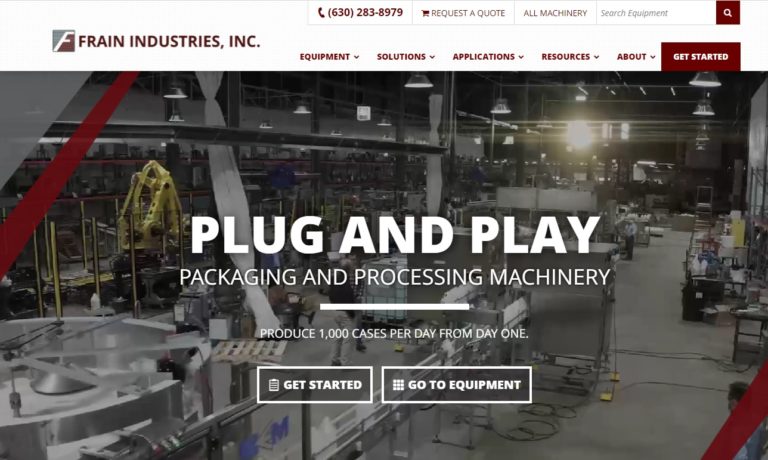
For 50 years G & F Manufacturing has been a leading quality stainless steel tank manufacturer for many industries, including pharmaceutical, food & beverage. Their storage containers offer quality workmanship & durability.
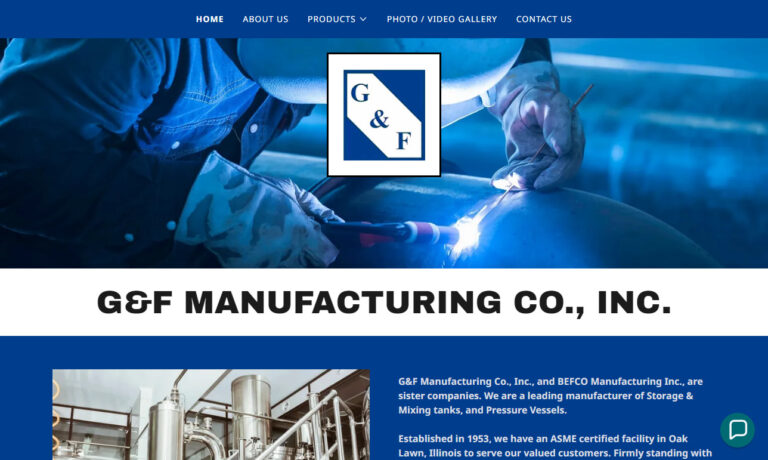
Rexarc’s focus is on the fabrication of custom stainless and carbon steel pressure vessels. We welcome applications with pressures between 500 and 5,000 psi. After nearly 100-years of being in business, Rexarc has the knowledge, attitude, equipment, and processes to support your needs in vessel production and value add services of piping, instrumentation, paint, and other controls...
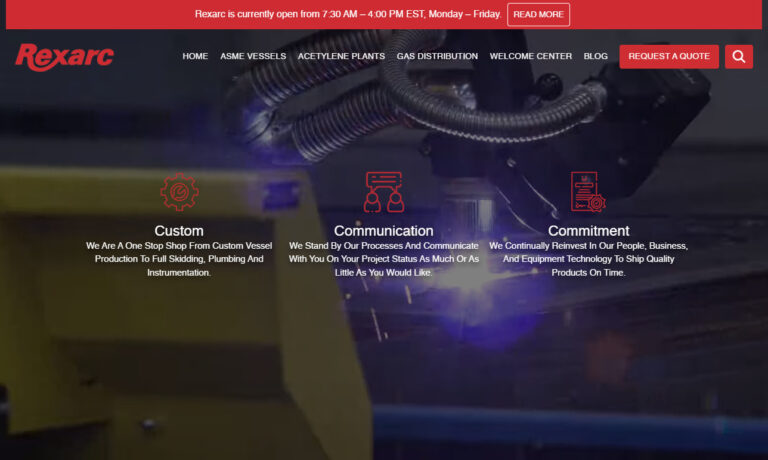
At Weston & Associates, we take pride in our extensive range of stainless steel tanks, meticulously designed and crafted to cater to a myriad of industries. Our tanks are not just products; they are a testament to our relentless pursuit of quality and functionality. We understand that each client is unique, and our diverse portfolio of tanks reflects our adaptability in customizing solutions that ...
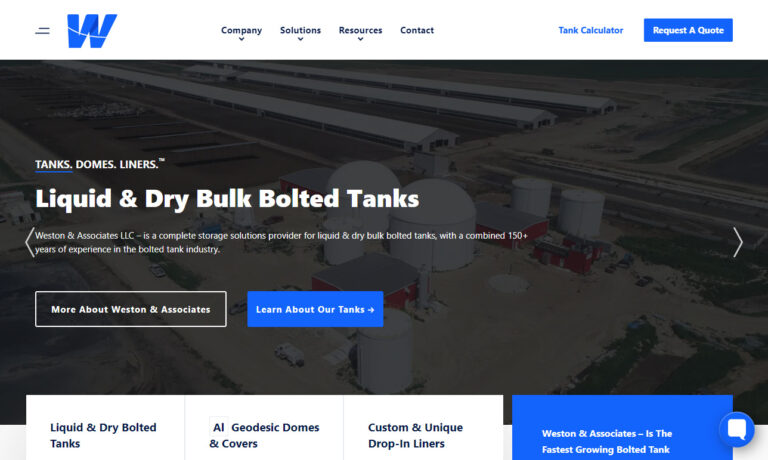
At True-Blue Welding and Fabrication LLC, we pride ourselves on our expertise in crafting high-quality stainless steel tanks. Our journey is defined by a relentless pursuit of perfection and a commitment to meeting the diverse needs of our clients. Join countless satisfied clients who have entrusted us with their most demanding projects and experience the True-Blue difference today.
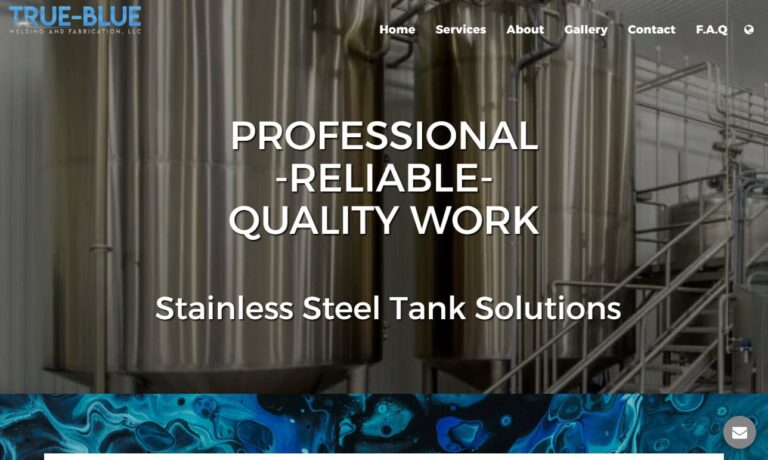
Here at Niles Steel Tank Company, we pride ourselves on being a premier provider of stainless steel tanks, offering a comprehensive range of products, services, and capabilities to meet the diverse needs of our esteemed clientele. With our unwavering commitment to excellence and extensive expertise in stainless steel tank manufacturing, we stand ready to deliver innovative solutions that excel in ...
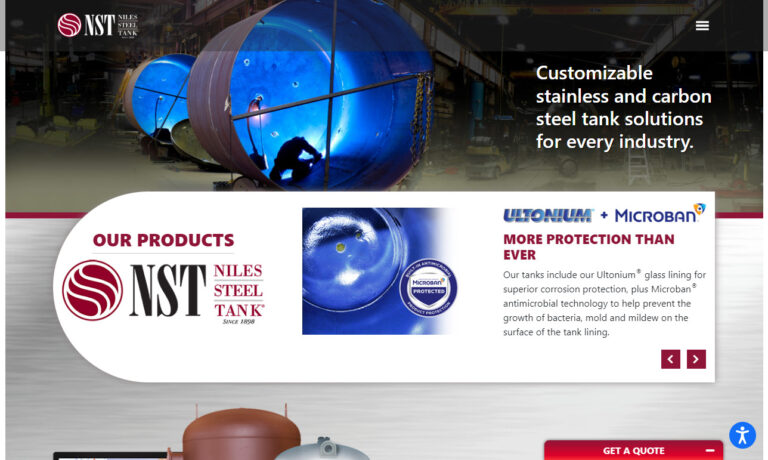
The highest quality, competitively priced new & used stainless steel tanks, related equipment & complete process systems for food & beverage, pharmaceuticals, cosmetics & chemicals. Keystone Process Equipment offers repair, field service, application engineering, purchase of existing equipment & custom designed equipment. Over 100 years of combined experience to get you exactly what you need!
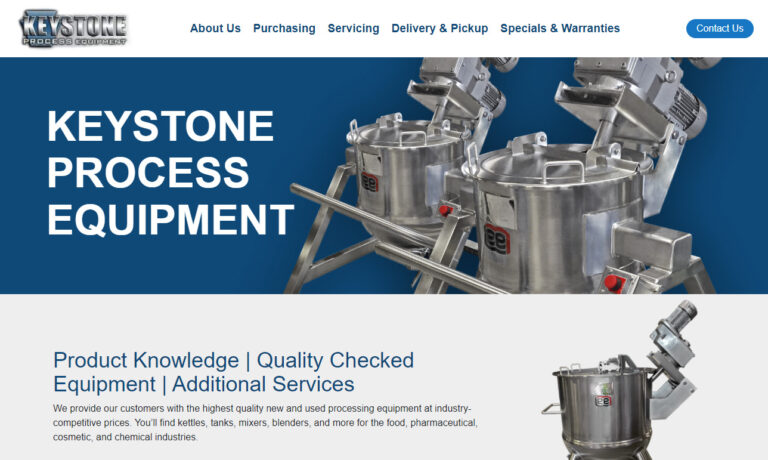
More Stainless Steel Tank Manufacturers
Due to this list of qualities, stainless steel tanks can store a vast range of substances, including food, beverages, water, gas, chemicals, and even hazardous materials.
Many industries and facets within those industries depend on these types of storage tanks. Some examples include the industrial industry, the construction industry, and the educational industry. Stainless steel (and similar) tanks provide critical storage services to locations such as factories, schools, and residential buildings.
History of Stainless Steel Tanks
The rise of steel storage tanks is closely tied to the rise of industrial society in Western countries during the mid-nineteenth century. In particular, the rise of the oil and energy industry spurred the development of storage technology. Before the Industrial Revolution, products like oil were generally stored in wooden barrels. However, rapid industrial developments quickly made this practice unfeasible.
The birth of oil drilling in the U.S. in 1859 created a new, potential source for commercial lighting. Although electricity soon replaced oil in this regard, oil and petroleum found a major role to play in the nascent automobile industry. As automobile innovation accelerated in the last decades of the 1800s, it became critical to find sizable but safe storage methods for substances such as hydrocarbons. Riveted steel tanks quickly replaced earlier wooden containers since they were safer, more durable, and possessed far greater storage capacities. (Interestingly, the evolution of steel tanks in the United States closely reflects the eventual rise of such storage systems in other parts of the world.)
Events throughout the twentieth century continued to shape the usage of steel tanks. World War II forced a temporary dependence on black carbon steel rather than galvanized steel for tank production. The rise of gas service stations in the U.S. – an outgrowth of the surging automobile industry – increased the popularity of underground tank storage. During the 1960s, storage tanks improved significantly in corrosion resistance due to new production material and new designs or accessories (e.g. fiberglass reinforced or coal tar epoxy coatings). Toward the turn of the century, a resurgence of above-ground tank storage appeared (largely due to environmental concerns with underground tank storage). In the 21st century, steel storage tanks and their counterparts are more durable and critical than ever in modern industrial society.
Stainless Steel Tank Materials
Steel is, by far, the most common material used to manufacture storage tanks. One of the most popular materials of tank construction is stainless steel, which is easy to manipulate and keep clean and sterile. Stainless steels themselves can be divided into several different categories. Austenitic stainless steel contains high amounts of nickel, manganese, and nitrogen; it is the most popular type of stainless steel to work with because of its easy welding properties. Ferritic stainless steel contains high amounts of chromium and possesses a cubic crystalline structure. Duplex stainless steels are also known as ferritic-austenitic stainless steels since they are specifically manufactured to combine the best qualities of both categories.
While stainless steel construction is the preferred choice for storage tanks, it is important to note that it is not the only choice. Storage tanks can also consist of concrete and various types of plastic (e.g. thermoplastic or polyethylene). Plastic storage tanks, in particular, are becoming more common. Tanks made from plastic often resist chemicals or reduce costs better than their steel counterparts.
Stainless Steel Tank Production
Stainless steel tanks are produced through a multi-step process that involves various stages of fabrication and assembly. The first step is the design phase, where engineers create detailed specifications and blueprints for the tank based on the specific requirements and intended use. Once the design is finalized, the manufacturing process begins. Sheets or plates of stainless steel, which are typically made from alloys containing iron, carbon, and other elements, are selected based on their thickness and corrosion resistance properties. These sheets are then cut and shaped using techniques like laser cutting or shearing to form the individual components of the tank, such as the cylindrical body, top and bottom heads, and any additional fittings or attachments.
The formed components are then subjected to processes like welding or rolling to join them together and create a watertight and structurally sound tank. Welding, a commonly used method, involves heating the edges of the components and fusing them together using electrical currents or gas flames. This ensures strong and durable joints. Rolling, on the other hand, is used for larger tanks where the components are rolled and welded to form the cylindrical body.
Once the tank structure is assembled, it undergoes various finishing processes. These processes include grinding, polishing, and passivation to improve the aesthetics and corrosion resistance of the tank. Grinding and polishing help smooth out any rough surfaces or weld seams, while passivation removes impurities and forms a protective oxide layer on the stainless steel surface, reducing the risk of corrosion.
Finally, the tanks are inspected for quality assurance. This involves checking for any defects, such as leaks or structural weaknesses, and conducting tests to ensure the tank meets the required industry standards and specifications. If any issues are identified, they are addressed and rectified before the tanks are ready for delivery or installation.
Overall, the production of stainless steel tanks involves a combination of design, material selection, fabrication, finishing, and quality control processes to create durable, corrosion-resistant, and reliable containers for various applications, such as storage of liquids, chemicals, or gases.
Stainless Steel Tank Features and Customizations
Stainless steel tanks offer a range of features and customizations to suit specific applications. One important feature is the manway, which is an opening in the tank for access during maintenance, cleaning, or inspection. Manways can be located on the top or side of the tank and are available in different sizes and configurations, such as hinged or bolted options. They provide convenience and ease of access, ensuring efficient operations and minimizing downtime.
Stainless steel tanks can be designed in both vertical and horizontal orientations. Vertical tanks are space-efficient and ideal for applications where height is restricted, while horizontal tanks are suitable for installations with limited floor space or when specific processes require a horizontal design. The choice of orientation depends on the available space and the requirements of the application.
The variation in tank heights, diameters, and shapes allows for customization based on specific needs. Tanks can be designed with varying capacities, from small volumes to large storage capacities, to accommodate different quantities of liquids or materials. The diameter of the tank influences its stability and footprint, while the height determines the vertical space required. Shapes can be customized to fit unique spaces or to meet specific process requirements.
Secondary containment features are crucial for preventing leaks or spills and protecting the environment. These features include double walls, leak detection systems, and containment basins. Double-wall tanks consist of an inner tank within an outer tank, providing an extra layer of protection against leaks. Leak detection systems can incorporate sensors or alarms to quickly detect any leaks or failures in the tank. Containment basins are used to collect spills or leaks, preventing them from spreading and causing environmental damage. These secondary containment features offer enhanced safety and environmental protection.
To determine the necessary features and customizations for a specific application, several factors should be considered. These include the type of material being stored, the desired storage capacity, the available space, any regulatory requirements, and the operational needs. Consulting with industry experts or engineers who specialize in tank design and applications can be beneficial. They can evaluate the specific requirements, assess potential risks, and provide guidance on the appropriate features, customizations, and secondary containment options that best suit the intended application, ensuring optimal performance, safety, and compliance.
Stainless Steel Tank Accessories
Stainless steel tanks can be equipped with various accessories to enhance their functionality and convenience. One important accessory is the mounting system used to secure tanks onto trucks or other transport vehicles. These mounting systems provide stability and security during transportation, ensuring that the tanks remain in place and do not pose any safety risks. The specific mounting accessories required depend on the type of vehicle and the intended use of the tank.
Dip charts or level gauges are another common accessory for stainless steel tanks. These gauges provide a visual indication of the liquid level inside the tank, allowing operators to monitor the contents without the need for direct physical access. Dip charts are particularly useful for tanks that store liquids or chemicals where accurate level monitoring is crucial for inventory management, process control, or safety purposes. They typically consist of calibrated markings or measurement scales on the tank’s exterior, enabling operators to determine the liquid level at a glance.
The need for these accessories depends on the specific application and operational requirements. For instance, if the tank needs to be transported on a truck or other mobile platform, a suitable mounting system is essential to ensure safe transportation without any movement or damage. Similarly, the need for dip charts or level gauges depends on the importance of accurate liquid level monitoring and the accessibility of the tank. If frequent level checks or remote monitoring is required, dip charts or other level measurement devices are necessary.
To determine the need for these accessories, it is crucial to consider factors such as the intended use of the tank, the transportation requirements, the need for liquid level monitoring, and any relevant industry regulations or standards. Consulting with experts or tank suppliers who have experience in the specific application can be helpful in assessing the requirements and selecting the appropriate accessories. They can provide guidance on the necessary mounting systems for transportation and recommend suitable level monitoring options based on the specific needs of the application, ensuring efficient operations and compliance with safety and regulatory requirements.
Types of Stainless Steel Tanks
While, generally speaking, all stainless steel tanks are used to contain substances or materials, they vary widely in terms of their specific purposes and appearances. Different types of stainless steel tanks include storage tanks, pressure vessels, and atmospheric tanks.
Storage tanks are used in a variety of industries, especially the brewing and agricultural industries. In these industries, stainless steel storage tanks exist as vats, bins, and silos.
- • The first example, vats, are used by breweries, wineries, and distilleries alike, where they assist in the refinement of beers, wine, and liquors.
- • Silos, on the other hand, are used heavily on farms, where they typically hold animal feed and grains, as well as other liquids, like milk, and solids. Typically, they are vertical, not horizontal.
- • In addition, stainless steel storage tanks are used in wastewater and sewage management, food and beverage, and medicine, because they can be relied upon to resist corrosion and stay hygienic, provided caretakers clean them routinely.
Pressure tanks count on the thermal conductivity of stainless steel for insulation purposes. They may serve a variety of purposes, but one common application they serve is to hold heat or cold for short or long periods of time. They are also used to hold gases and liquids at differential pressures, or at pressures that are significantly different from the ambient pressure.
- • Examples of pressure vessels include domestic hot water storage tanks, pressurized hydraulic reservoirs, pneumatic reservoirs, compressed air receivers, nuclear reactor vessels, pressure reactors, diving cylinders, distillation towers, recompression chambers, and more.
- • Similar to pressure tanks are atmospheric tanks, which hold liquids at atmospheric pressure.
In the auto industry, for example, specialized stainless steel tanks called gas tanks are used to store fuel. In order to fortify them against cracking, flaking, gasoline diffusion, and corrosion, gas tanks are airtight and coated in zinc or aluminum.
Likewise, stainless steel water tanks are designed specifically to hold large amounts of water. They can be installed either above or below ground, where they hold water for a variety of purposes, such as irrigation and farming, food preparation, drinking, and fire-fighting. Note that, because of the delicate nature of the potability of water, waters tanks must be monitored regularly.
Food grade tanks are another specialty tank. They may be used either to store perishable substances at a controlled temperature or to mix or blend substances together. For the former purpose, tanks must be cleaned regularly so that they can maintain the sterile environment they provide. Food grade tanks designed for the latter application are produced with a motor-powered propeller that helps them blend and mix.
- • Along these lines, milk tanks are stainless steel tanks used on dairy farms to keep milk fresh. These tanks, also called bulk milk cooling tanks, do so by housing raw milk at a cold temperature until a milk hauler can pick it up.
Septic tanks are specialized storage tanks used in conjunction with larger sewage treatment, or septic, systems. They can consist of various materials (such as steel, concrete, plastic, or fiberglass) and are used to absorb wastewater and process organic material from residential locations in a passive manner (i.e. using gravity instead of mechanical power). Some septic tanks are able to hold up to a thousand gallons of water.
Fuel tanks are critical to store liquid fuels in environments such as refineries. Broadly speaking, fuel tanks can be defined as any storage container designed to store flammable liquid. Generally speaking, they can be divided into two categories:
Fixed roof tanks are for liquids with extremely high flash points (temperatures where a substance can ignite in air). This type of tank often possesses a cone shaped lid that is welded to the tank.
- • Floating roof tanks, which possess non-stationary lids that literally float atop a liquid surface. This category can be further divided into external floating roof tanks (used for medium flash point liquids) and internal floating roof tanks (used for low flash point liquids). Some floating roof tanks combine a conical lid with a floating lid.
Water storage tanks- Though setting up a water storage tank seems quite apparent, it is essential to keep the design customizations in mind. An important and crucial part of various applications is managing water scarcity. Hence, there needs to be special customizations on nozzles and flanges in accordance with the sensors and flow valves.
Other types of fuel tanks include sphere tanks, bullet tanks, underground storage (UST) tanks, and liquefied natural gas (LNG) tanks.
Care for Stainless Steel Tanks
Stainless steel tanks must therefore be carefully handled, particularly during construction, installation, and transportation. To prevent tank leakage, which could threaten tank contents with the invasion of toxins, manufacturers often equip tanks with emergency bilge pumps or submersible pumps. The former combats leakage by pumping out liquids as a leak into a tank. Meanwhile, submersible pumps do the same from inside the tank itself. Usually, pumps like these are installed with tanks that are used to treat groundwater or extract pollutants. Ultimately, even if they come with accessories like pumps, the only way operators can be sure that their tanks are working safely and properly is to check them regularly and clean them after every use.
Limitations and Overcoming Them
While stainless steel tanks offer numerous advantages, they do have certain limitations. One limitation is their susceptibility to corrosion under specific conditions. While stainless steel is highly resistant to corrosion, it can still be affected by certain chemicals, high temperatures, or environments with low oxygen levels. Manufacturers are continuously working to overcome these challenges by employing advanced corrosion-resistant alloys or coatings, optimizing the tank design to minimize crevices and stagnant areas where corrosion can occur, and recommending appropriate material selections based on the specific application and environment.
Another limitation is the potential for stress corrosion cracking, which can occur in stainless steel tanks exposed to a combination of tensile stress and a corrosive environment. To mitigate this, manufacturers employ stress-relieving techniques during the fabrication process and perform thorough testing and inspections to ensure the structural integrity of the tanks.
Additionally, stainless steel tanks may have limitations in terms of size and shape. Large tanks can present challenges in terms of transportation, installation, and fabrication, requiring specialized equipment and expertise. Manufacturers address these challenges by employing advanced fabrication techniques, modular construction methods, and working closely with customers to design tanks that meet their specific requirements while considering practical limitations.
Moreover, cost can be a limitation as stainless steel tanks tend to have higher upfront costs compared to other materials. However, stainless steel’s long lifespan, durability, and resistance to corrosion can offset this by providing a lower total cost of ownership over the tank’s lifespan.
To overcome these limitations, stainless steel tank manufacturers continuously invest in research and development to improve materials, welding techniques, corrosion-resistant coatings, and fabrication methods. They collaborate with experts in the field, utilize computer-aided design and simulation tools, and stay updated with industry standards and advancements. By doing so, they strive to provide customers with innovative solutions that address the limitations of stainless steel tanks, ensuring reliable performance, longevity, and customer satisfaction.
Benefits of Stainless Steel Tanks
Stainless steel tanks offer a wide range of benefits, making them a popular choice in various industries. One key advantage is their exceptional corrosion resistance. Stainless steel is highly resistant to rust, oxidation, and chemical reactions, making it ideal for storing corrosive substances, such as acids, alkalis, and certain chemicals. This resistance ensures the integrity and purity of the stored materials and reduces the risk of contamination.
Another benefit is their durability and strength. Stainless steel tanks are robust and capable of withstanding harsh environmental conditions, high pressures, and mechanical stress. They have excellent structural integrity, allowing for safe storage of liquids, gases, and solids. Their strength also enables them to withstand impacts, vibrations, and thermal stresses, ensuring longevity and reliability.
Stainless steel tanks are also hygienic and easy to clean. The smooth and non-porous surface of stainless steel prevents the accumulation of contaminants, bacteria, or residues, making them suitable for applications in the food, beverage, and pharmaceutical industries. This material is also resistant to UV radiation, temperature variations, and fire, adding to its versatility and suitability for a wide range of environments.
Furthermore, stainless steel tanks are environmentally friendly. They are recyclable, meaning they can be repurposed or recycled at the end of their lifecycle, reducing waste and minimizing the demand for new raw materials. Stainless steel is also non-toxic, ensuring the safety of the stored substances and minimizing environmental impact.
Additionally, stainless steel tanks offer aesthetic appeal and a professional appearance. They can be customized with various finishes, such as polished, brushed, or painted surfaces, allowing for an aesthetically pleasing appearance that is suitable for both industrial and commercial settings.
Overall, the benefits of stainless steel tanks include corrosion resistance, durability, strength, hygiene, environmental sustainability, and aesthetic appeal. These advantages make stainless steel tanks an excellent choice for a wide range of applications, including chemical storage, food and beverage processing, pharmaceutical manufacturing, water treatment, and many others.
Stainless Steel Tank Applications
Stainless steel tanks find extensive applications across multiple industries. In the food and beverage industry, stainless steel tanks are commonly used for storing and processing ingredients, beverages, dairy products, oils, and sauces. The hygienic properties of stainless steel make it an ideal choice to maintain the integrity and quality of food and beverage products. Similarly, in the water industry, stainless steel tanks are employed for storing potable water, wastewater, and other liquids, ensuring cleanliness and preventing contamination.
Stainless steel tanks also play a crucial role in the storage and transportation of various gases, such as oxygen, nitrogen, and carbon dioxide. The corrosion resistance and strength of stainless steel make it suitable for handling high-pressure gas storage applications. In the chemical industry, stainless steel tanks are used for storing and processing chemicals, acids, solvents, and other corrosive substances, providing durability and protection against leaks or spills.
Stainless steel tanks find applications in handling hazardous materials as well, offering a secure containment solution for storing and transporting hazardous waste, radioactive materials, or flammable substances. The robustness and resistance to corrosion make stainless steel tanks a reliable choice for ensuring safety and environmental compliance.
Stainless steel tanks are also widely used in pharmaceutical and water treatment applications due to their hygienic properties, corrosion resistance, and compatibility with various substances. In the pharmaceutical industry, these tanks are utilized for storing, mixing, and processing pharmaceutical ingredients, ensuring product integrity and preventing contamination. In water treatment applications, stainless steel tanks are employed for water purification, storage, and distribution, providing a durable and sanitary solution. They can be customized with features like manways, agitators, and level gauges to meet specific requirements, and their ability to withstand corrosive environments and ease of cleaning make them an ideal choice for these critical industries.
Beyond industrial applications, stainless steel tanks are also utilized in the education industry for laboratory settings, where they provide storage and containment for chemicals, reagents, and scientific materials. In the construction industry, stainless steel tanks are employed for temporary or permanent storage of water, fuels, or construction materials, offering durability and resistance to external elements.
Residential applications of stainless steel tanks include domestic water storage, rainwater harvesting, and irrigation systems. The corrosion resistance and longevity of stainless steel make it an ideal choice for residential water storage, ensuring clean and safe water supply.
In summary, stainless steel tanks have diverse applications in the food and beverage, water, gas, pharmaceutical, wastewater treatment, chemical, hazardous materials, industrial, education, construction, and residential sectors. Their corrosion resistance, durability, and hygienic properties make them a reliable choice for storing, processing, and transporting various substances across a wide range of industries.
Stainless Steel Tank Considerations
When purchasing storage solutions from a stainless steel tank manufacturer or supplier, some standard customer considerations apply. Since storage tanks can vary widely and are often used to hold hazardous material, a supplier’s ability to provide custom storage solutions as well as high-quality solutions is very important. Consider the depth of expertise and/or capabilities regarding a supplier’s engineering staff, fabrication facilities, field crew dispersion, etc.
One of the best ways to gauge a supplier’s worth is by checking their level of accreditation and adherence to industry-specific standards. Professional standards and environmental regulations tend to vary based on the type of contents a steel tank is designed to contain. The oil and energy field provides a good example of using professional standards to choose a supplier. The American Petroleum Institute (API) and Petroleum Equipment Institute (PEI) were developed in the twentieth century during the acceleration of the petroleum industry; today, they are widely respected for their storage tank standards and usage/maintenance guidelines. (The API 650 specification is a well-known standard regulating oil storage in steel tanks.) If looking for an oil storage solution, choosing an API member is a good way to ensure that you will be working with a manufacturer who is abiding by the latest safety requirements, industry policies, etc.
When actually choosing which type of storage tanks to integrate into your business, it is important to remember that a tank’s application largely determines the most important factors to consider when searching for a tank. For example, if a tank will be used mostly for mixing purposes, the geometry of a tank becomes extremely important to achieve properly proportioned mixes in an efficient amount of time. Another example is the use of steel tanks to store water for residential buildings, offices, and similar locations. Under these circumstances, tank durability – and therefore, material construction – becomes much more important than the physical geometry of the actual tank. Choosing a supplier with a high level of experience will ensure that you obtain expert advice on how to select the best type of tank for your commercial application.

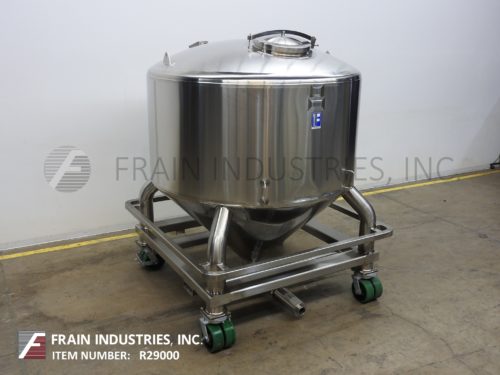
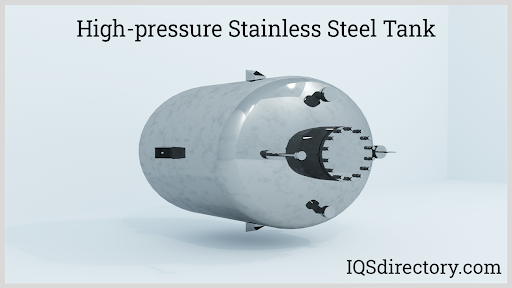
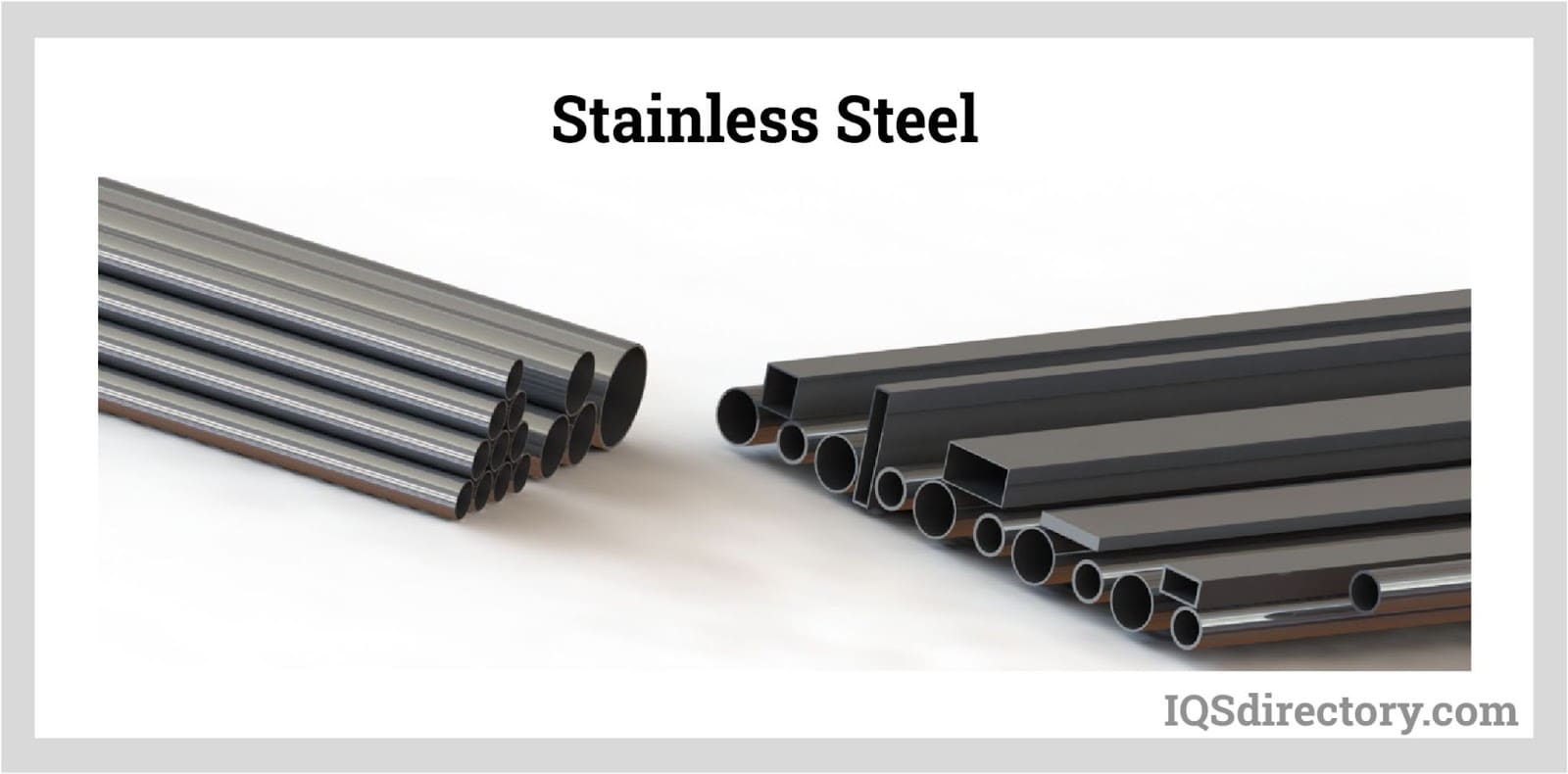

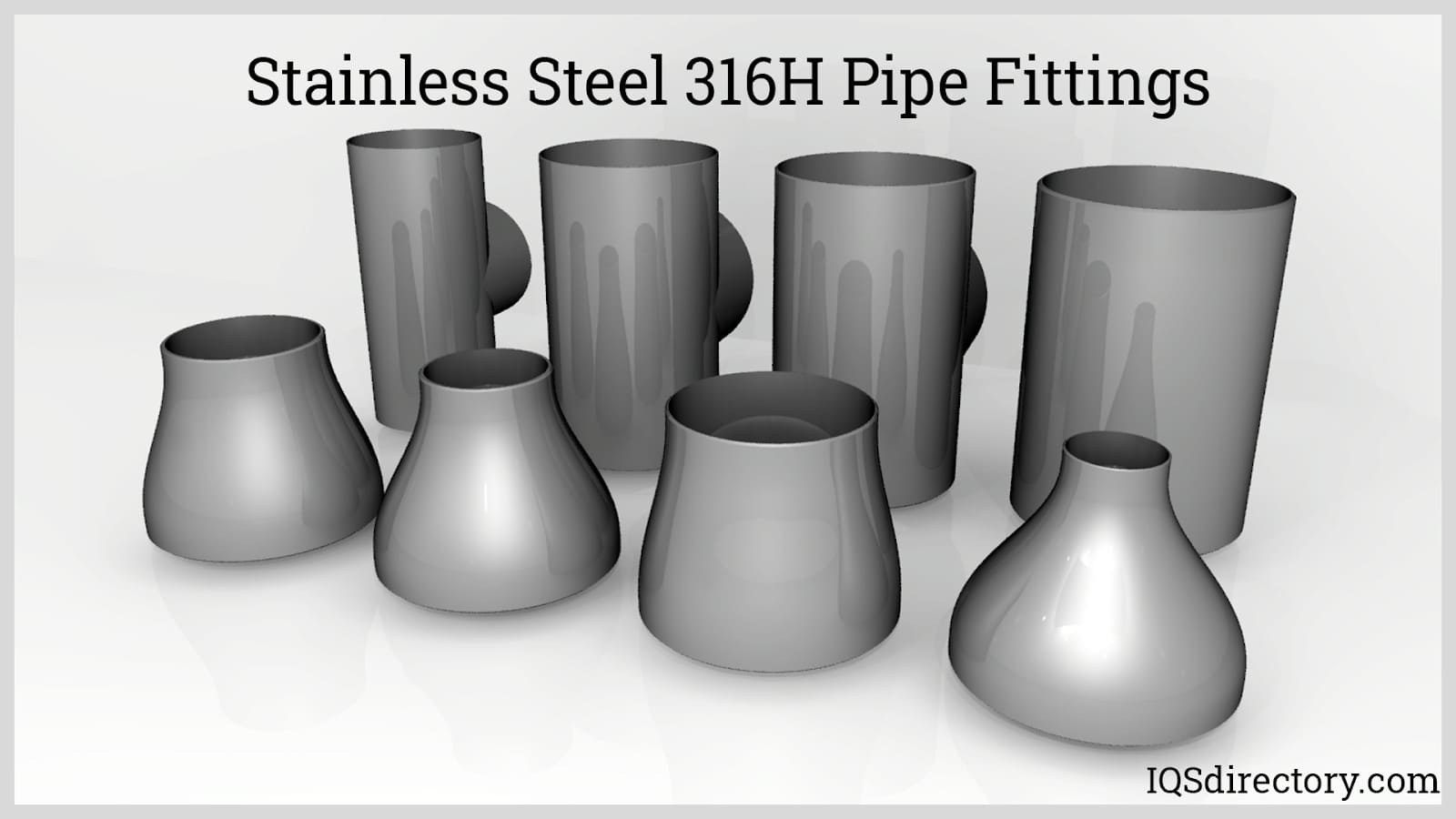
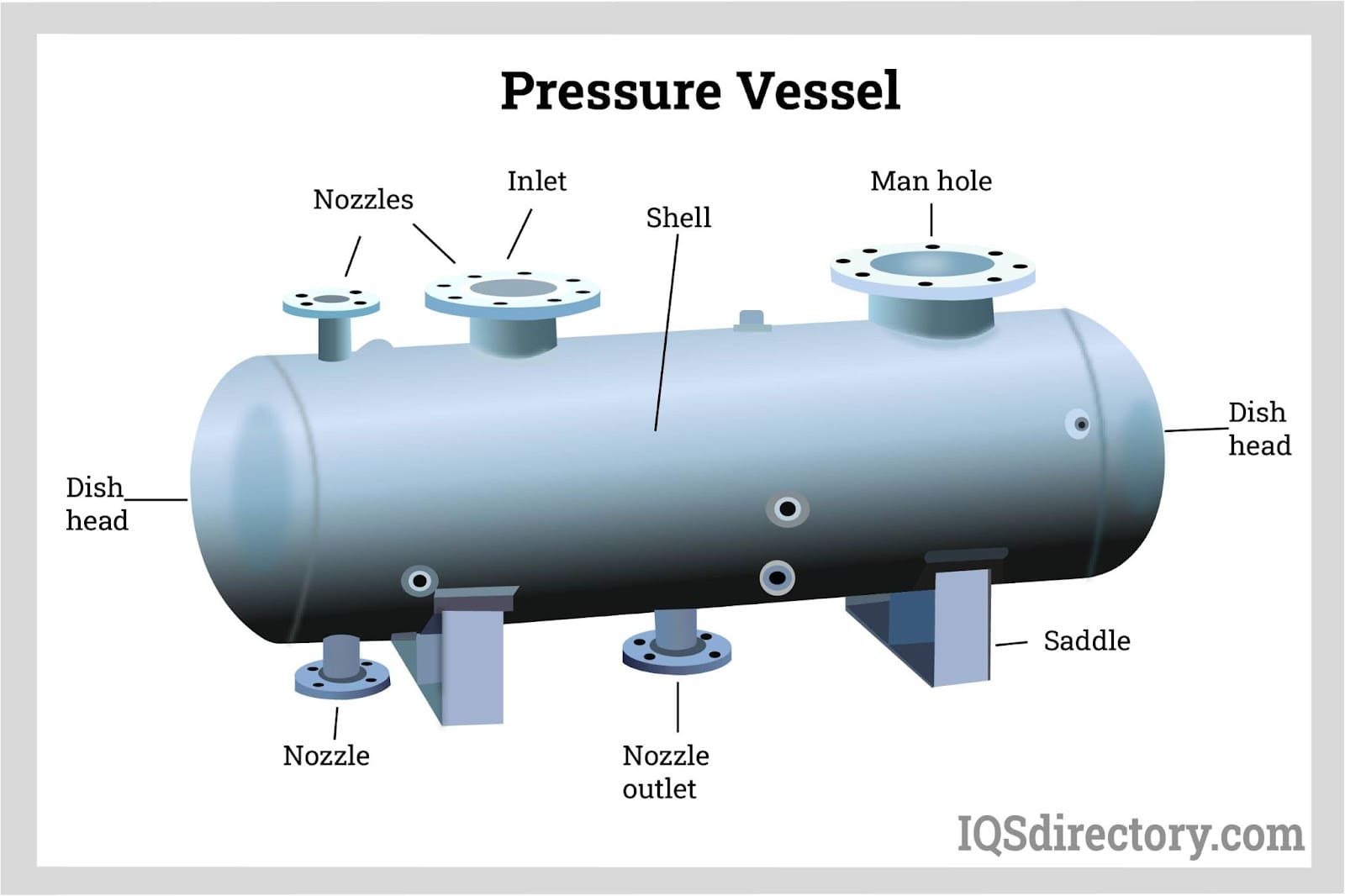
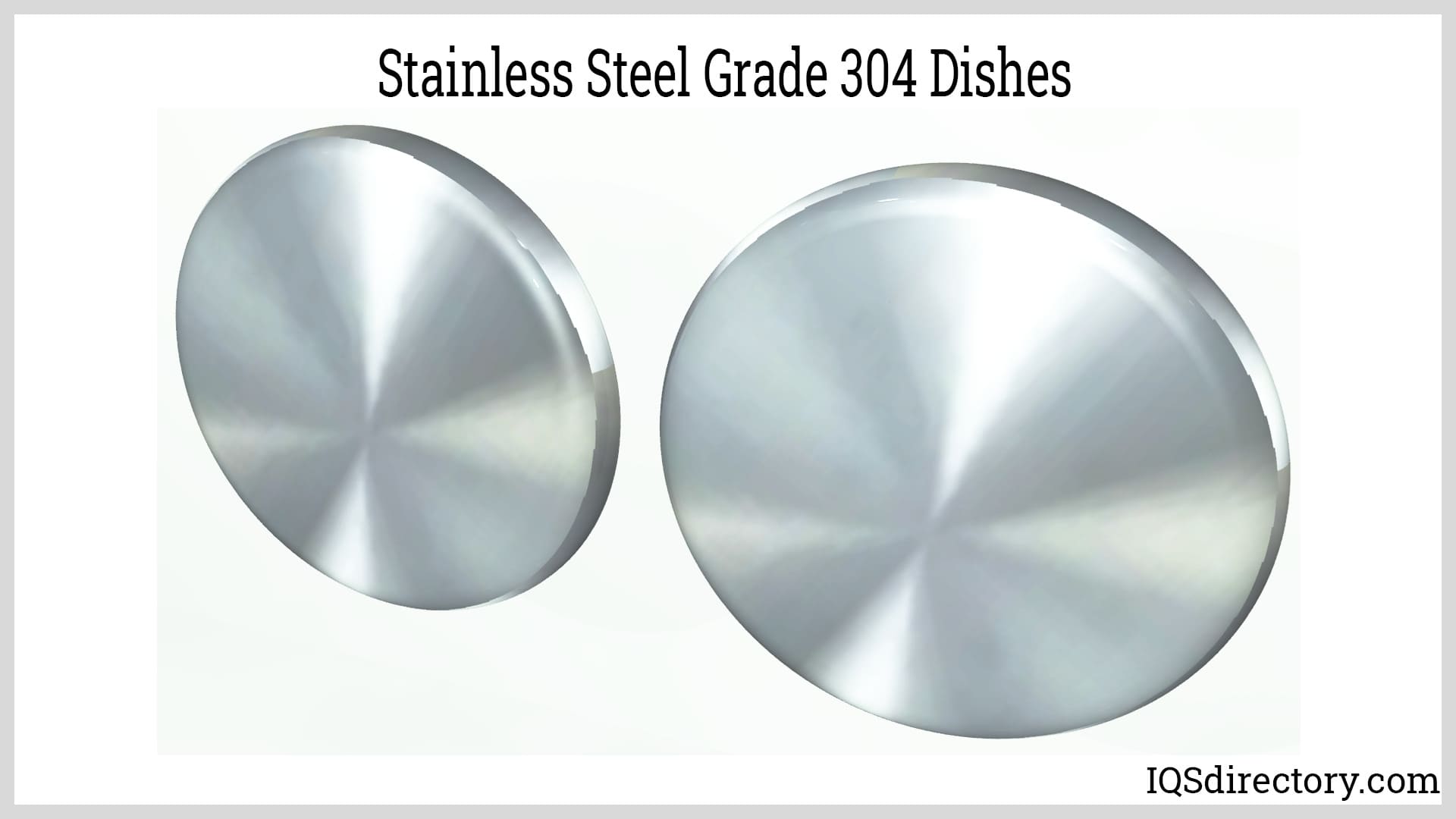
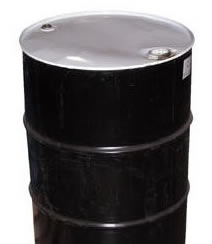 55 Gallon Drums
55 Gallon Drums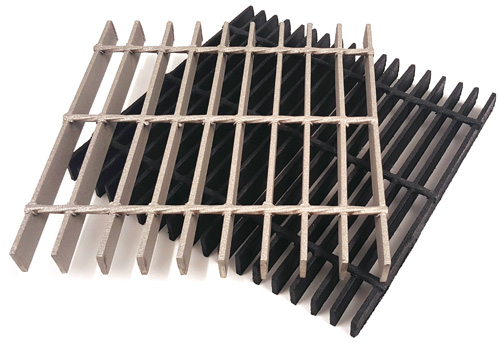 Floor Gratings
Floor Gratings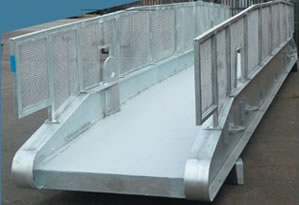 Mezzanines
Mezzanines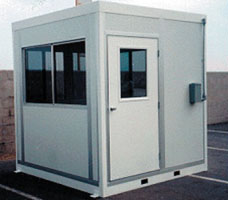 Modular Buildings
Modular Buildings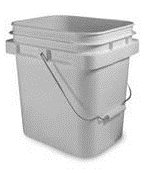 Plastic Containers
Plastic Containers Plastic Pallets
Plastic Pallets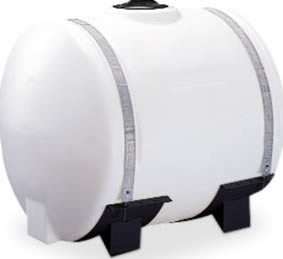 Plastic Tanks
Plastic Tanks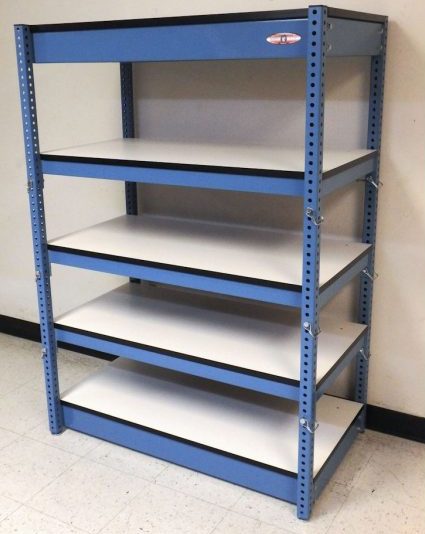 Steel Shelving
Steel Shelving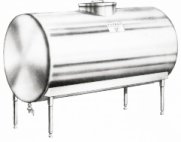 Stainless Steel Tanks
Stainless Steel Tanks Storage Racks
Storage Racks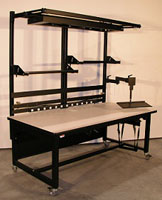 Work Benches
Work Benches Castings & Forgings
Castings & Forgings Bulk Material Handling
Bulk Material Handling Electrical & Electronic Components
Electrical & Electronic Components Flow Instrumentation
Flow Instrumentation Hardware
Hardware Material Handling Equipment
Material Handling Equipment Metal Cutting Services
Metal Cutting Services Metal Forming Services
Metal Forming Services Metal Suppliers
Metal Suppliers Motion Control Products
Motion Control Products Plant & Facility Equipment
Plant & Facility Equipment Plant & Facility Supplies
Plant & Facility Supplies Plastic Molding Processes
Plastic Molding Processes Pumps & Valves
Pumps & Valves Recycling Equipment
Recycling Equipment Rubber Products & Services
Rubber Products & Services